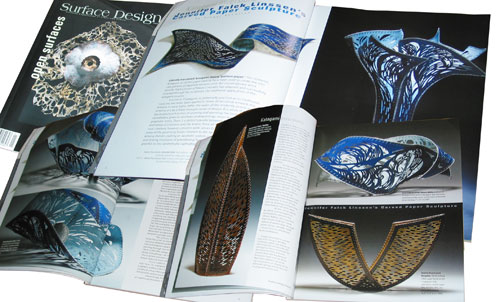In the film Bright Star, released last month, sewing, fashion and handwork play more than walk-on parts. Set in London in 1818, the film chronicles a secret, and ill-fated, love affair between the young English poet, John Keats (Ben Whishaw), and the girl next door, Fanny Brawne (Abbie Cornish), an out-spoken student of high fashion. They make an unlikely pair, he thinking her a stylish minx, and she unimpressed not only by his poetry but by literature in general. “My stitching has more merit and admirers than both of your two scribblings put together,” Fanny tells John Keats and Charles Brown, as they dismiss her so they can work on their poetry. “And I can make money from it.” That scene illustrates a key conflict in the film, between Fanny’s “utilitarian talent and his ethereal one, a woman’s ‘craft’ versus a man’s ‘high art,'” Elizabeth Bales Frank observes in her blog review of the film.
The film’s director, Jane Campion, spends time sewing herself — including embroidering pillowslips for her daughter and her own friends. Campion told Livia Bloom of Filmmaker magazine that “Sewing is a literal metaphor for making one’s will, stitch after stitch. Louise Bourgeois also has a lot of sewing and waiting in her work. I love that this film is an opportunity to look at the world, or look at an event, or at Keats happening, through the eyes of someone who was a sew-er and a wait-er.”
Campion’s eye for needlework detail is evident from the opening scene, an extreme close-up of a needle piercing a cloth. It’s “a close image, very close, so close that you can see the fibers of the cloth furring its surface,” says Frank in her review. “This, then, will be a film about intimacy and domesticity, about creativity and limitations.” In other shots, the camera will linger on buttonholes, and seek out hats, pointy shoes, an embroidered silk pillowcase and a lavishly layered triple mushroom collar. The film ends as it begins, with Fanny sewing, this time her widow’s gown.
“In that period there weren’t many opportunities for women to express themselves,” Campion has observed. “They sewed and they waited; it has a kind of rhythm — needle in, needle out — to me that’s kind of poetic.”

A detail from the earliest plate in Fanny Brawne’s book, dated 1812. Between 1821, when Keats died, and 1933 her book contains few entries. Her interest in fashion seemed to return after she married Louis Lindon.
Even Abbie Cornish, the 26-year-old Australian actress who played Fanny, picked up needle and thread to better inhabit the character. That Fanny created her own clothes and had a reputation for her flamboyant dress were key, according to Cornish. “You look back to her journals and they’re filled with drawings, different embroidery patterns and fabric swatches.” Fanny Brawne kept a Fashion Plate Book, from the time she was 12, in which she collected fashion, theatrical and costume illustrations. She wrote letters to Keats’ sister Fanny offering advice on fashion, textiles and London dressmakers and including diagrams to enhance her explanations. Fanny also occupied herself with embroidery, sewing and knitting. The Keats House Collection contains a few items that she created including a fichu scarf. A display about Fanny and fashion can be seen at the Keats House.





 Only a few weeks left to left observe the official International Year of Natural Fibres (yes, we’re sticking with the international spelling here). For browngrotta arts and many of the artists we represent, of course, promotion of natural fiber in art and otherwise is a lifelong pursuit. In 2009, however, we had the assistance of the Food and Agriculture Organization of the UN, which declared this year the International Year of Natural Fibres
Only a few weeks left to left observe the official International Year of Natural Fibres (yes, we’re sticking with the international spelling here). For browngrotta arts and many of the artists we represent, of course, promotion of natural fiber in art and otherwise is a lifelong pursuit. In 2009, however, we had the assistance of the Food and Agriculture Organization of the UN, which declared this year the International Year of Natural Fibres